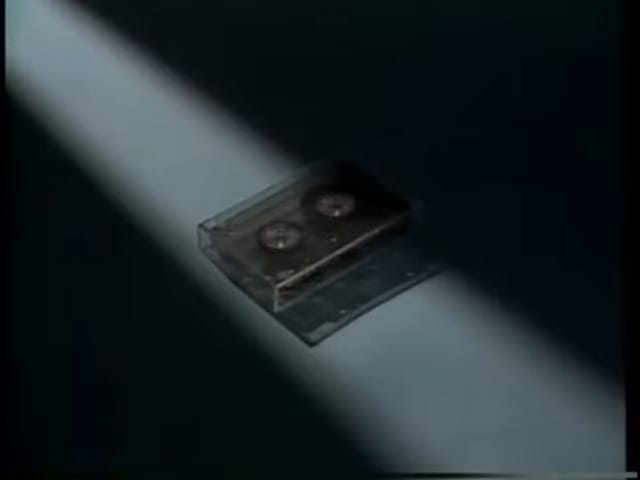Slacker Chimera: Ghost Cat Anzu
Just like its titular character, Ghost Cat Anzu is a bit of a chimera.
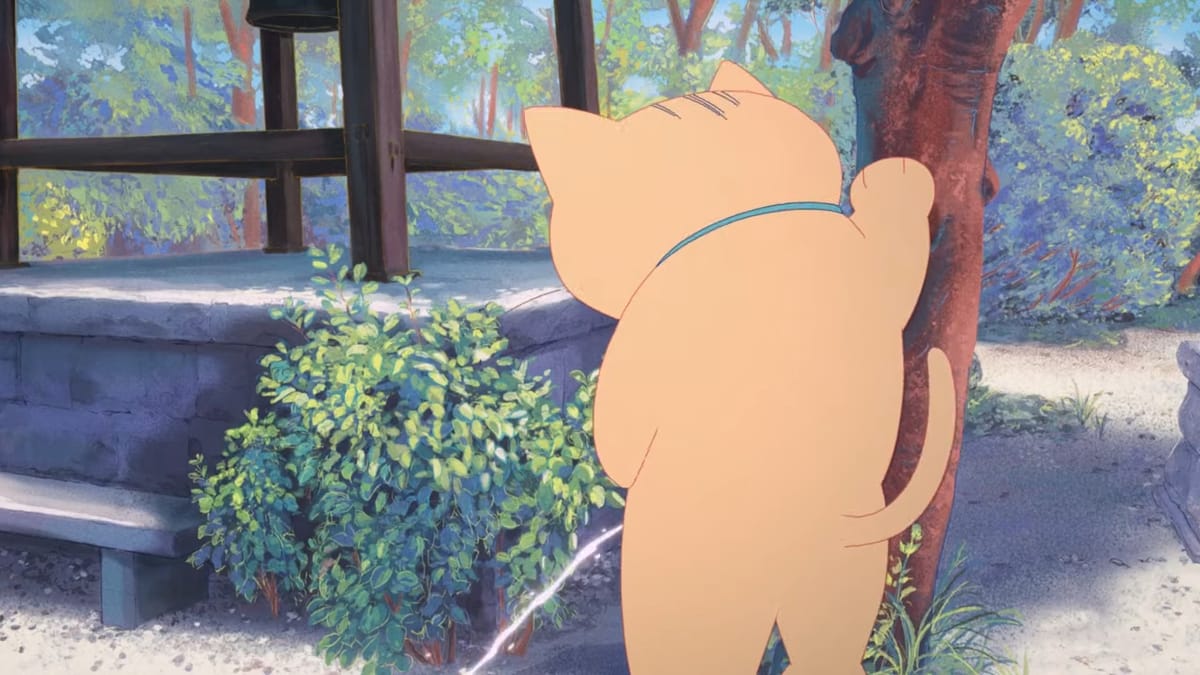
Ghost Cat Anzu is a film about a ghost cat named Anzu. What is a ghost cat, you might ask? Well, imagine if Garfield was the size of your dad and nobody cared. Anzu is a menace. He drives around town on a motor scooter without a license. (After the police book him for breaking the law, he spends the rest of the film riding a bicycle.) At other times you can find him drinking with local deities, lounging around the local Buddhist shrine and farting in people’s faces. Sure, he’ll give you a massage if you ask for it. But a real job? Nya ha ha! Good luck.
Ghost Cat Anzu is also a film about Karin, an eleven year old girl whose father dumps her at his grandfather’s place in the countryside. Karin’s big eyes and pigtailed hair mark her as the sweet, sincere lead of a Ghibli film. That is, until the first time you catch her rolling her eyes. The truth is that Karin is a manipulative little brat who is more than happy to charm her friends and neighbors into doing whatever she wants. Don’t hold it against her, though; she’s just a kid lashing out at a world that killed her mom and saddled her with a useless dad buried in debt.

I expected going into the theater that Ghost Cat Anzu would be a heartwarming film in which Karin learns a very special lesson living together with Anzu. Maybe something about coming to terms with grief or appreciating the quiet rhythms of life in the countryside. These themes are certainly there if you look closely. But Ghost Cat Anzu does not lead the audience to these conclusions. It is perfectly happy to goof off instead.
This is a film that is perfectly willing to turn the audience against its main characters. Do you feel bad for poor Karin? Well, what if she pressured the local kids into stealing Anzu’s bike and throwing it in the river so that she could run away to Tokyo? Don’t get too mad on Anzu’s behalf, though, because he confiscated Karin’s hard-earned cash and spent it in a pachinko parlor without her permission. Then, just when you think you understand where Ghost Cat Anzu is going, Karin and Anzu travel to the underworld and the film abruptly transforms into Spirited Away.
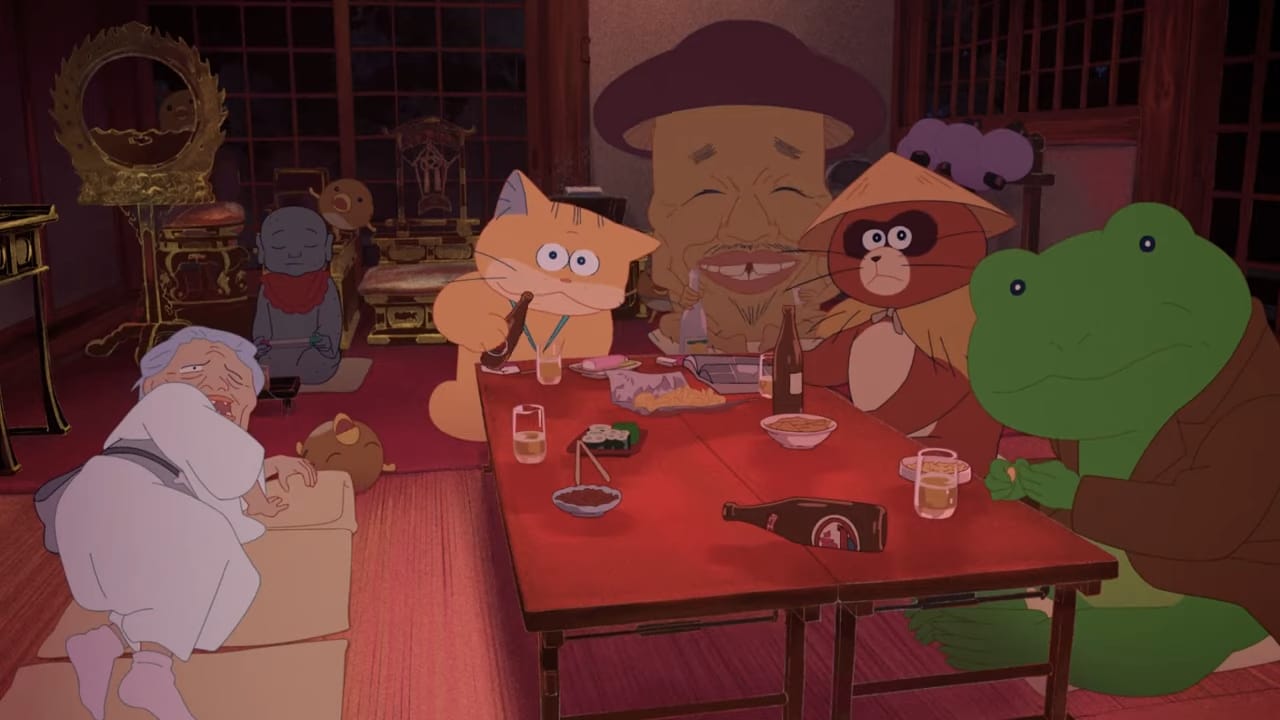
Ghost Cat Anzu refuses to pick a lane; it jumps from slacker comedy to coming-of-age tale and grand scale supernatural fantasy without warning or apology. If you grew up watching Disney and Pixar movies (or perhaps the Doraemon franchise) I imagine this would be a rough watch. Pixar in particular wrote the guidebook for children’s films about mismatched couples who go on a journey and learn valuable lessons along the way. Ghost Cat Anzu shares a few beats with these films but does not signpost anything. There are no “crying scenes” meant to extract audience catharsis. The scariest moment in the film is a one-off line of dialogue that is never fully explained.
How does a movie like this come about? Well, just like its titular character, Ghost Cat Anzu is a bit of a chimera. It’s a French-Japanese collaboration directed by a live-action film director and a multi-talented artist. Nobuhiro Yamashita’s best known abroad for his 2005 high school girl band movie Linda Linda Linda, but he’s been making quirky films about slackers and outsiders for years now. Yoko Kuno on the other hand can do it all; she’s a manga artist, animator and even directed the rotoscope animation for Shunji Iwai’s film The Case of Hana and Alice. (For more information about the production of the film, I recommend Kevin Cirugeda’s write-up at Sakuga Blog.)
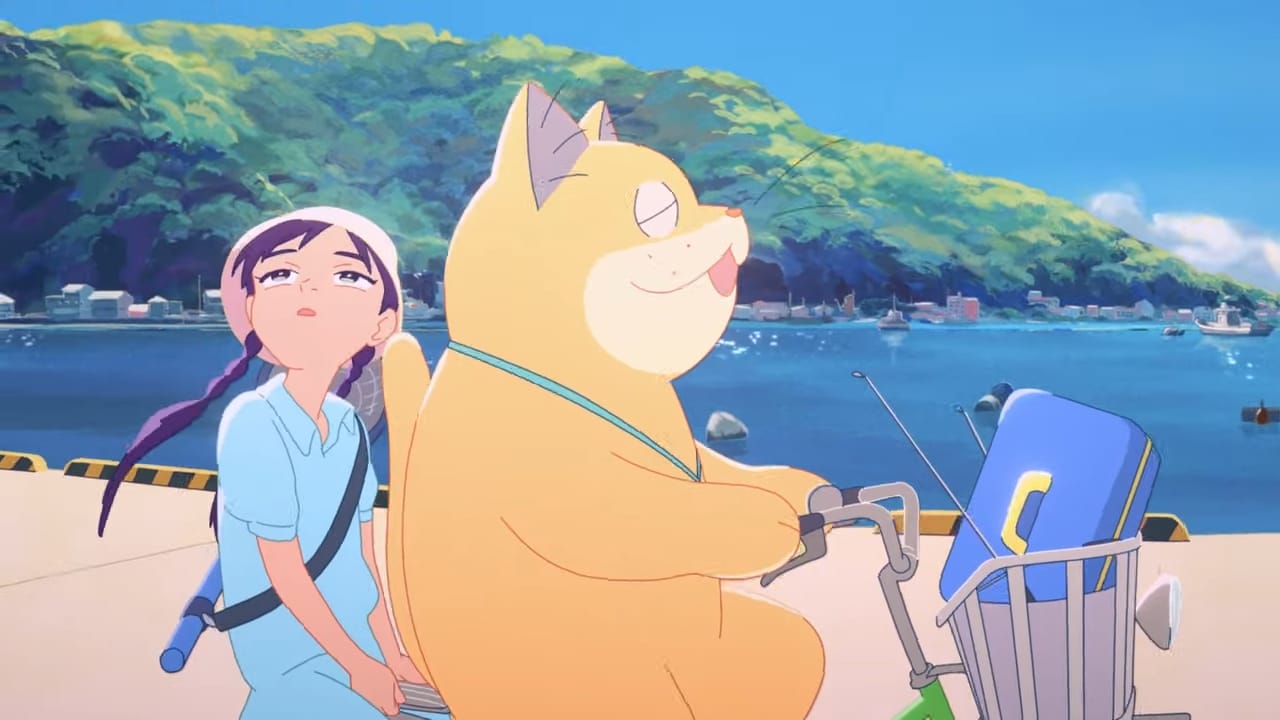
Ghost Cat Anzu was first filmed as live action and then rotoscoped. The backgrounds on the other hand are given life by the Paris studio Miyu Production. As a result, the film is a big mix of aesthetic elements. The characters are exaggerated cartoons that move and act realistically. They inhabit painterly environments that are far more beautiful than what you’d find in the real world; yet the sun is rendered as a chunky squiggle like something out of a children’s book. Even the length of shots in the film is closer to live-action than traditional anime. Ghost Cat Anzu isn’t slow cinema but it might as well be compared to its competition.
In an interview with Anime Corner, Yoko Kuno said that she was particularly inspired by Shinji Somai’s film Moving while making Ghost Cat Anzu. Moving is (just like Anzu) a film about a young girl who acts out after her family goes through a seismic shift. Neither film is particularly interested in teaching their heroines how to be “a good person.” What matters instead is that they find peace so that they can move on to the tough business of adolescence. Karin is also the film’s invention, a character who did not appear in Takashi Imashiro’s manga source material. Her inclusion matters.
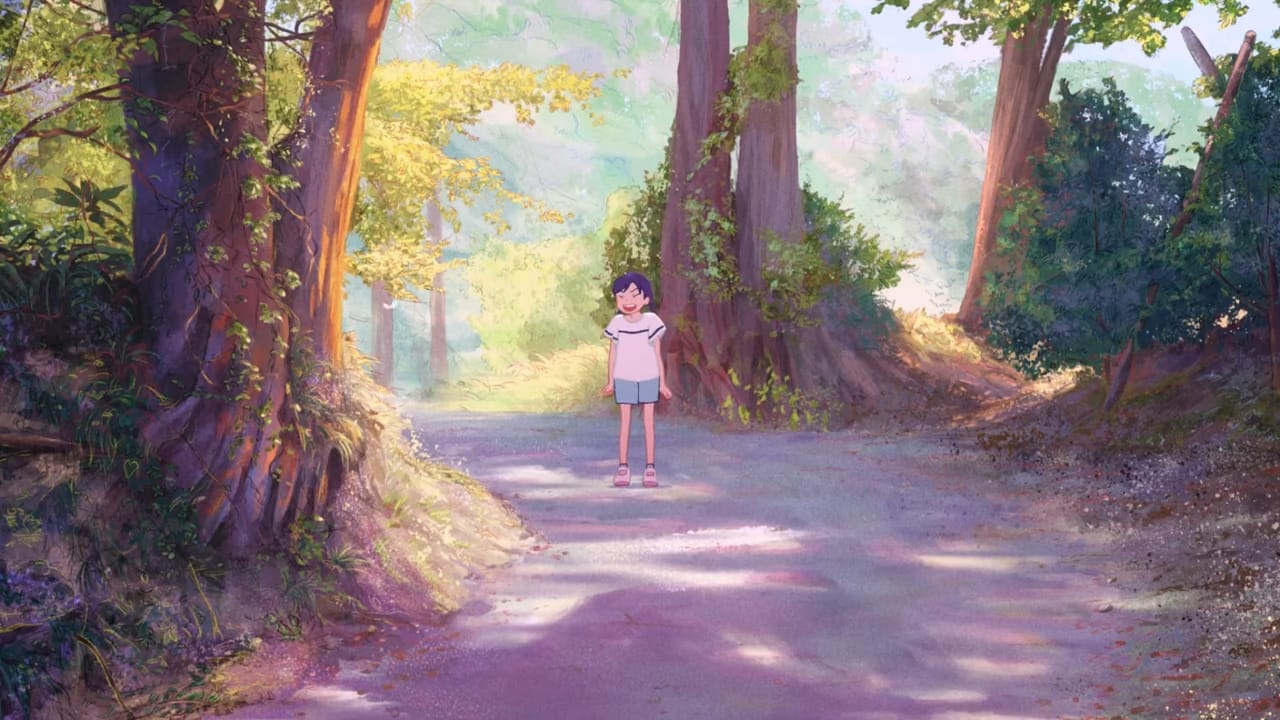
A scene in the film that sticks in my mind comes in the second half, when Karin travels to Tokyo with Anzu in order to track down her deadbeat dad. She stops by her old cram school and finds a boy that she used to like. The two of them go to the local Aloha Oe Cafe, which is constantly blaring Hawaiian music. (Hawaiian residents and Pokémon players alike will recognize that Japanese tourists are frequent visitors of the islands.) Karin wants to marry her crush but also doesn’t know any better because she’s eleven years old. Her crush on the other hand has already forgotten their promise and is too busy studying to think about romance.
Watching Karin desperately trying to mend ties with her fake boyfriend in a fake cafe in the middle of a major city, I couldn’t help but wonder what her future might look like. Tokyo in the film can be a nice place but is also full of loan sharks. The countryside is easy-going but quite dull; there’s a big golf course there too, which is a point against it. Even the spirit world is depicted as a banal mid-luxury hotel in which death by impaling and janitorial work are just two different kinds of torture.
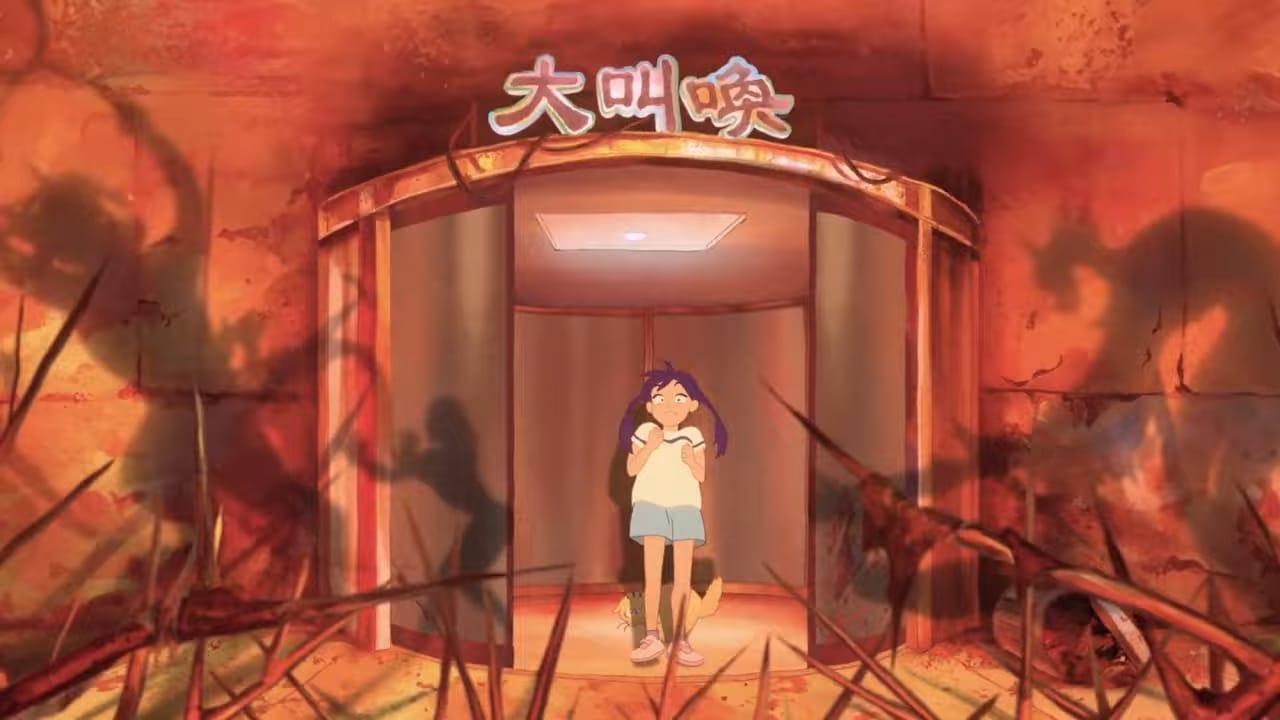
How do you live in a world like that? A beautiful and yet banal world where death is inevitable and the only people that matter will never understand your pain? You can muddle through it like Anzu. Or, like Karin, you can give up the slackers in your life who leave you behind for the slackers that care about you. At the end of the film, Karin leaves her father and Tokyo to stay behind in the countryside. Yet there is no climactic scene where she and Anzu tearfully reunite. Instead we end with her running up the hill to her grandfather’s house, calling Anzu’s name.
As Anzu sweeps the grounds outside his home, the eyes of a nearby Buddha statue close. Is it because it is the end of the film? Because Anzu or Karin have learned to let go? When I left the theater, I thought that my own confusion was a problem with the film. In retrospect, though, I think it might have been the point. Why should we expect an answer from Anzu of all spirits? Maybe we should be more comfortable sitting with the questions. Nya ha ha!

Bookmarks
For Anime Herald, Caelyn Ellis wrote about the tangled history of the VF-1 Valkyrie transforming plane-robot.
For Anime Feminist, AJ covered the infamous, seizure-inducing "Electric Soldier Porygon" episode of Pokémon, and how its reception influenced the anime industry as a whole.
Colleen of Colleen’s Manga Recs told the tale of Tokyopop’s rise and fall. It’s amazing that Stu Levy is still in the publishing industry after all this…
For Manga Mavericks, Varun Gupta interviewed anime director Naoko Yamada about such topics as the price of theramins and the color that she associates herself with.
Over at KComicsBeat, comics journalist and site co-founder Deb Aoki has been live-blogging her trip to Paris.
What I Wrote
For Yatta-Tachi, I profiled the nominees for the American Manga Awards’s Best New Edition of Classic Manga category. I also did an interview with Glacier Bay Books head Emuh Ruh.
For Crunchyroll News, I interviewed Thaliarchus about his (now complete!) epic mecha poem Cosmic Warlord Kin-Bright. English and classics majors rejoice. Also, I wrote about Tricot!
For KComicsBeat, I reviewed several series including A Bona Fide Killer, Danzi, Burning Effect and On a Leash. I particularly liked Danzi, but the others are also worth checking out!
Over on Unpacking the Shelf, the podcast I do with my friend Alex, we have episodes on Phoenix: Karma, The Creepy Case Files of Margo Maloo and this year’s indie game opus UFO 50.
AMV of the Week
Here’s “Hardware Store” by Dark Luminous.
